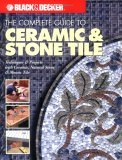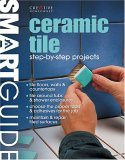A Stone Tiled Floor Provides a Unique Charm and Natural Look to any Room or Home
By Mark J. Donovan
|
|
Stone tile flooring is ideal for many home applications including kitchens, bathrooms, great rooms, hallways and entranceways. It provides both a natural and stylish look to any room, and will add value to your home. There are numerous natural stone floor tile materials to choose from including granite, travertine, marble, slate, limestone sandstone, onyx and quartz-based. In addition, stone tile flooring comes in a plethora of colors and patterns since it is produced by nature. They are also available in many different shapes and sizes including mosaics.
Stone floor tiles are classified into two major finish type categories, rough and tumbled stone, and polished stone, with each type having their unique pros and cons. |
Rough and tumbled stone floor tiling has a very natural, grainy, and textured look. It is also quite porous and as a result is susceptible to staining. Rough and tumbled stone floor tiles are available in sandstone, limestone, Travertine, slate, and even certain marble types.
They can be sealed to reduce the risk of staining, however they may not be the most appropriate stone floor tile for a kitchen that will have children and pets frequenting it often.
Also, when installing stone floor tiling it is imperative that the subfloor be extremely smooth, strong, and have virtually no deflection. White thinset mortar is most commonly used when installing stone floor tiles, and a diamond blade wet saw should be used for cutting stone tiles. Grout lines are normally kept narrow for stone floor tiling projects, e.g. under ¼ inch.
To prevent staining, stone floor tiling should be promptly sealed after installation. In addition, they should periodically be resealed every 12 to 24 months. Not only will sealing protect the stone floor tiles, but also the grout lines. Sealing the grout lines also helps to prevent water penetration.
For information on installing a shower pan membrane liner for a ceramic tile shower, see the Shower Pan Membrane Liner Installation Ebook from HomeAdditionPlus.com. The Shower Pan Membrane Liner EBook will quickly teach you the step-by-step process for installing the shower pan membrane liner correctly. It includes instructions on framing the shower stall, pouring the pre-slope and shower base mortar, and installing the shower pan membrane liner.
See HomeAdditionPlus.com’s Ceramic Tile Calculator
See my “How to Tile a Custom Ceramic Tile Shower” Ebook to learn how to tile your own shower: For a detailed set of instructions on tiling a shower floor and walls, including pictures for every step in the process, see my “How to Tile Custom Ceramic Tile Shower Ebook”.
Related Information
Additional Ceramic Tile Resources from Amazon.com
 |
 |
 |
Get Free Basement Remodeling Price Quotes with No Obligation!
Fill out our 3-5 minute quick and easy form, and receive a free price quote on basement remodeling from one of our prescreened and licensed basement remodeling contractors. This process is free and there is no obligation to continue once you receive your basement remodeling price estimate.

